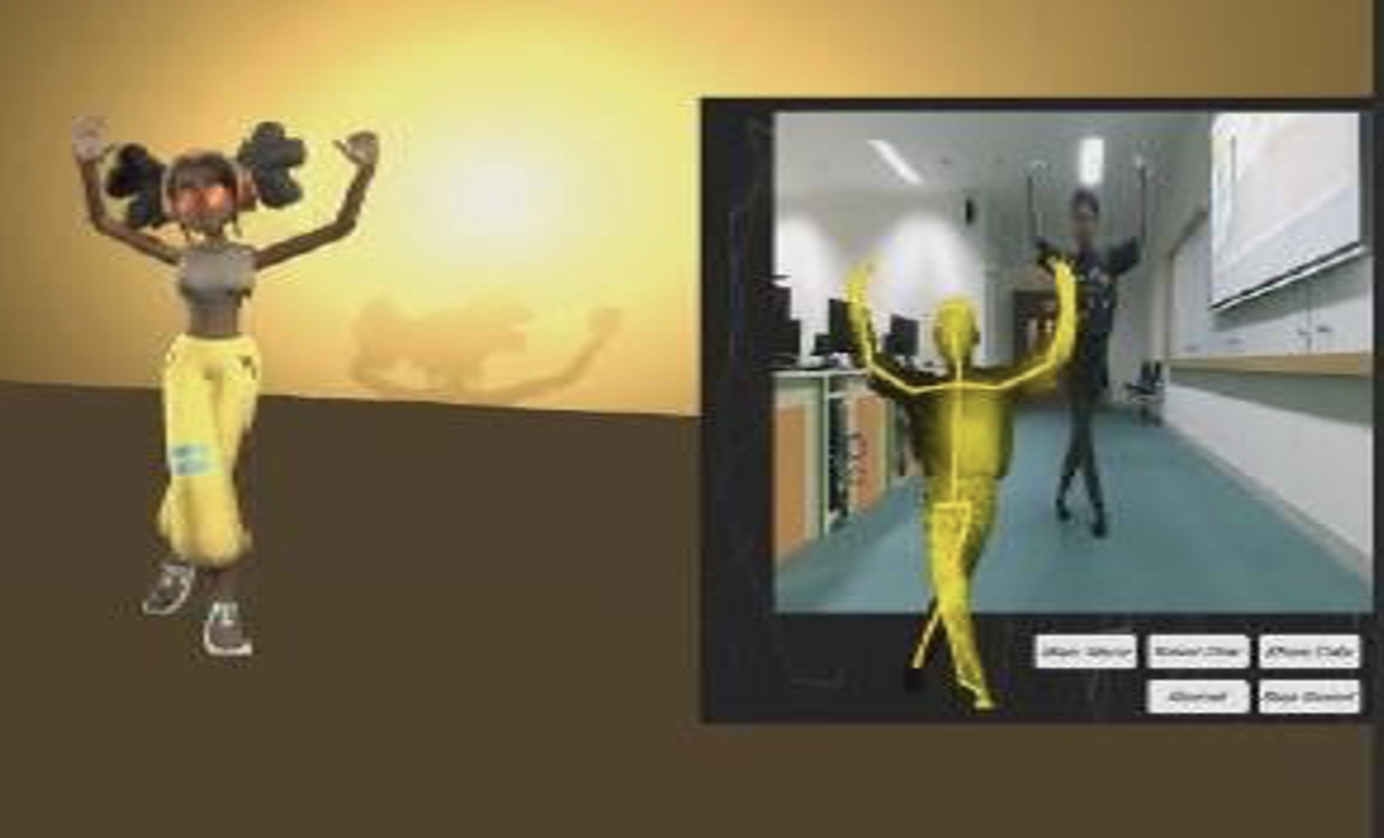Motion Capture Technique with Enhancement Filters for Humanoid Model Movement Animation
DOI:
https://doi.org/10.12928/mf.v5i1.6534Keywords:
Motion Capture, Enhancement Filter, Movement Animation, Humanoid Model, Kinect SensorAbstract
The definition of 3D animation is a representation of objects that are made into animation using characters or objects to look more alive and real. Making 3D animation itself requires a long process and a large amount of funding. This is because most 3D animated films still use key-framing technology which causes the process to make an animation to take a lot of steps. In this research, a motion capture technique with an enhancement filter is proposed to make humanoid movement animation using Kinect 2.0. The method consists of several steps such as recording every skeleton joint of human movements using a Kinect sensor, filtering the movements to minimize the shakiness and jitter from Kinect data, mapping skeleton data to the bones of a rigged humanoid model, and recording each movement to make animation. The final result is in the form of a 3D animation of modern dance movements. The method is tested by measuring the similarity between the 3D humanoid model and the user movement. From the 10 animations of modern dance generated by the method and performed by the user, a questionnaire to measure the MRI and MSE value is distributed and the result achieves 4.27 on a scale of 5 for the averaged MRI score and 0.0539 for the MSE score. The MSE value is less than 5% which means the system is categorized as acceptable.
References
M. Izani, Aishah, A. R. Eshaq, and Norzaiha, “Keyframe animation and moition capture for creating animation: a survey and perception from industry people,” in Proceedings. Student Conference on Research and Development, 2003. SCORED 2003., 2003, pp. 154–159, doi: 10.1109/SCORED.2003.1459684.
T.-Y. Mou, “Keyframe or Motion Capture? Reflections on Education of Character Animation,” EURASIA J. Math. Sci. Technol. Educ., vol. 14, no. 12, Oct. 2018, doi: 10.29333/ejmste/99174.
Mr. Naeemabadi, B. Dinesen, O. K. Andersen, and J. Hansen, “Investigating the impact of a motion capture system on Microsoft Kinect v2 recordings: A caution for using the technologies together,” PLoS One, vol. 13, no. 9, p. e0204052, Sep. 2018, doi: 10.1371/journal.pone.0204052.
et al. Rosenhahn, Bodo, “A system for marker-less motion capture,” Künstliche Intelligenz, vol. 1, pp. 45–51, 2006.
M. Naeemabadi, B. Dinesen, O. K. Andersen, and J. Hansen, “Influence of a Marker-Based Motion Capture System on the Performance of Microsoft Kinect v2 Skeleton Algorithm,” IEEE Sens. J., vol. 19, no. 1, pp. 171–179, Jan. 2019, doi: 10.1109/JSEN.2018.2876624.
T. M. Guess, S. Razu, A. Jahandar, M. Skubic, and Z. Huo, “Comparison of 3D Joint Angles Measured With the Kinect 2.0 Skeletal Tracker Versus a Marker-Based Motion Capture System,” J. Appl. Biomech., vol. 33, no. 2, pp. 176–181, Apr. 2017, doi: 10.1123/jab.2016-0107.
A. Napoli, S. Glass, C. Ward, C. Tucker, and I. Obeid, “Performance analysis of a generalized motion capture system using microsoft kinect 2.0,” Biomed. Signal Process. Control, vol. 38, pp. 265–280, Sep. 2017, doi: 10.1016/j.bspc.2017.06.006.
A. Shingade and A. Ghotkar, “Animation of 3D Human Model Using Markerless Motion Capture Applied To Sports,” Int. J. Comput. Graph. Animat., vol. 4, no. 1, pp. 27–39, Jan. 2014, doi: 10.5121/ijcga.2014.4103.
P. Kopniak, “Motion capture using multiple Kinect controllers,” Przegląd elektrotechniczny, vol. 8, pp. 26–29, 2015.
S. B. Adikari, N. C. Ganegoda, R. G. N. Meegama, and I. L. Wanniarachchi, “Applicability of a Single Depth Sensor in Real-Time 3D Clothes Simulation: Augmented Reality Virtual Dressing Room Using Kinect Sensor,” Adv. Human-Computer Interact., vol. 2020, pp. 1–10, May 2020, doi: 10.1155/2020/1314598.
R. Filkov, “Kinect with MS-SDK,” 2013. https://rfilkov.com/2013/12/16/kinect-with-ms- sdk/ (accessed Feb. 01, 2020).
et al. Setyati, Endang, “Phoneme-Viseme Mapping for Indonesian Language Based on Blend Shape Animation,” IAENG Int. J. Comput. Sci., vol. 42, no. 3, 2015.
Adobe, “Mixamo Character,” 2019. https://www.mixamo.com/#/?page=1&type=Character (accessed Feb. 01, 2020).
Unity, “Unity User Manual,” 2020. https://docs.unity3d.com/Manual/index.html (accessed Feb. 01, 2020).
Microsoft, “Microsoft Kinect SDK,” 2014. https://developer.microsoft.com/en- us/windows/kinect/ (accessed Feb. 01, 2020).

Downloads
Published
Issue
Section
License
Copyright (c) 2023 Ahmad Yasin Habibillah, Adhi Prahara, Murinto

This work is licensed under a Creative Commons Attribution-ShareAlike 4.0 International License.
Start from 2019 issues, authors who publish with JURNAL MOBILE AND FORENSICS agree to the following terms:
- Authors retain copyright and grant the journal right of first publication with the work simultaneously licensed under a Creative Commons Attribution License (CC BY-SA 4.0) that allows others to share the work with an acknowledgment of the work's authorship and initial publication in this journal.
- Authors are able to enter into separate, additional contractual arrangements for the non-exclusive distribution of the journal's published version of the work (e.g., post it to an institutional repository or publish it in a book), with an acknowledgment of its initial publication in this journal.
- Authors are permitted and encouraged to post their work online (e.g., in institutional repositories or on their website) prior to and during the submission process, as it can lead to productive exchanges, as well as earlier and greater citation of published work.

This work is licensed under a Creative Commons Attribution-ShareAlike 4.0 International License.












 Mobile and Forensics (MF)
Mobile and Forensics (MF)